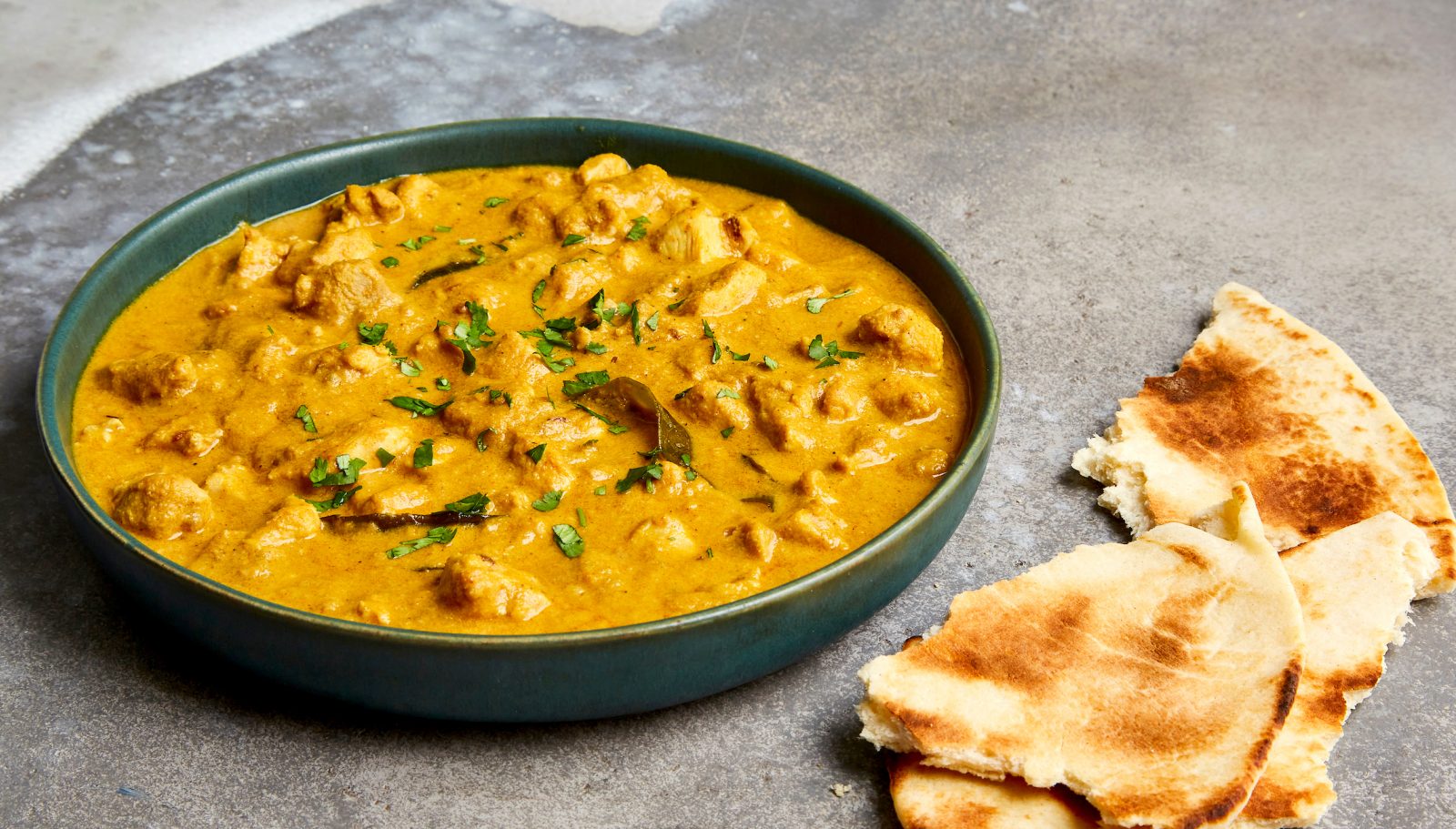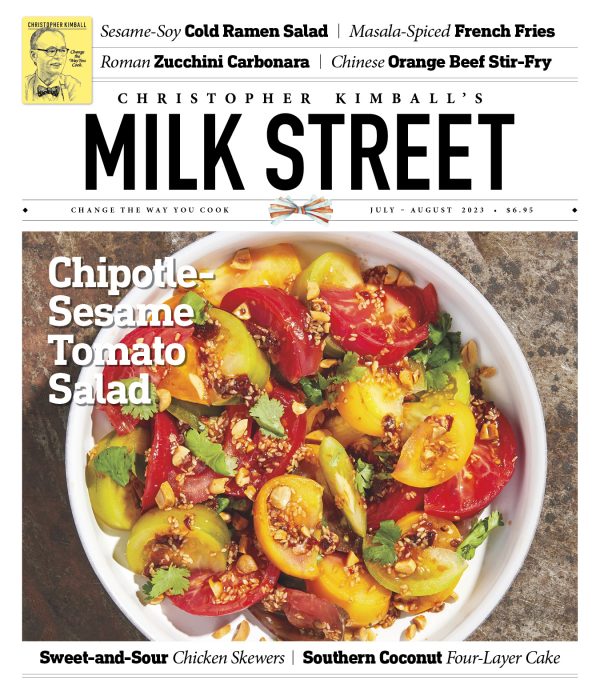Your email address is required to begin the subscription process. We will use it for customer service and other communications from Milk Street. You can unsubscribe from receiving our emails at any time.




Hyderabadi Chicken Curry
This recipe is free for a limited time. 12 WEEKS FOR $1 TO ACCESS EVERY MILK STREET RECIPE. Learn More.
Salan-style curries, which originate in the south-central Indian city Hyderabad, combine peanuts, coconut and sesame seeds to create a thick, luxurious sauce. There are countless iterations, including murgh ka salan, which uses chicken. We learned an excellent version of it from chef Zuber Momin at his restaurant Hyderabadi Spice in London. The dish is deeply complex, thanks to a base of browned onion, garlic, ginger and oil-bloomed spices. The nuts, seeds and spices make for a lengthy ingredient list, but the knifework is minimal, the cooking is easy, and the finished dish is exceptionally delicious. Kashmiri chili powder is vibrantly colored with moderate heat; we found a mixture of sweet paprika and cayenne to be a good substitute. Curry leaves have a unique inimitable savoriness. While the dish is fantastic made with them, it does not suffer without, so don’t fret about leaving them out. Salan curries are usually eaten alongside biryani, a spiced meat and rice dish, but steamed basmati rice, naan or roti are all wonderful accompaniments.
4 to 6
Servings
Don’t let the ground spices cook for too long or they may burn and make the sauce bitter. They need just a quick toast before being blended with water.
1 hour
-
1½
tablespoons tamarind pulp
-
½
cup boiling water
-
⅓
cup roasted peanuts
-
¼
cup unsweetened shredded coconut
-
1
tablespoon sesame seeds
-
4
tablespoons grapeseed or other neutral oil, divided
-
1
medium yellow onion, finely chopped
-
Kosher salt and ground black pepper
-
1
tablespoon finely grated fresh ginger
-
4
medium garlic cloves, finely grated
-
2
teaspoons garam masala
-
1
teaspoon Kashmiri chili powder (see headnote) or 1½ teaspoons sweet paprika plus ½ teaspoon cayenne pepper
-
¾
teaspoon ground turmeric
-
1
teaspoon yellow mustard seeds
-
1
teaspoon cumin seeds
-
curry leaves (optional; see headnote)
-
2
pounds boneless, skinless chicken thighs or breasts, trimmed and cut into ¾- to 1-inch chunk
-
Chopped fresh cilantro, to serve

Recipe
Garam Masala
-
01In a small bowl, combine the tamarind pulp and boiling water; stir with a fork to break up. Cover and let stand for 30 minutes. Strain through a fine-mesh sieve set over another small bowl; press on the solids and scrape the underside of the sieve to collect the pulp that clings. Set aside; discard the solids in the sieve.
-
02Meanwhile, in a large Dutch oven over medium, toast the peanuts, coconut and sesame seeds, stirring, until golden and fragrant, 3 to 5 minutes. Transfer to a blender and set aside.
-
03In the same Dutch oven over medium-high, heat 2 tablespoons of the oil until shimmering. Add the onion and 1 teaspoon salt; cook, stirring occasionally, until lightly browned, 7 to 9 minutes. Stir in the ginger and garlic; cook, stirring, until no longer raw, about 1 minute. Add the garam masala, chili powder and turmeric; cook, stirring, until fragrant, about 30 seconds. Add 1 cup water and scrape up any browned bits, then transfer to the peanut mixture in the blender; reserve the pot. Blend on high until thick and smooth, scraping the blender jar as needed, 1 to 2 minutes; set aside.
-
04Set the Dutch oven over medium and add the remaining 2 tablespoons oil, the mustard seeds, cumin seeds and curry leaves (if using). Cook, stirring, until fragrant and sizzling, 1 to 1½ minutes. Add the puree and bring to a simmer over medium-high; cook, stirring, until very thick, 2 to 3 minutes.
-
05Stir in the tamarind liquid and 1 cup water, then add the chicken. Simmer, uncovered and stirring occasionally, until the chicken is no longer pink when cut into, about 8 minutes for breasts or 13 minutes for thighs. Off heat, taste and season with salt and pepper. Serve sprinkled with cilantro.





